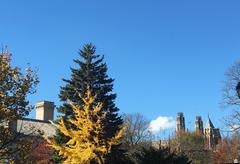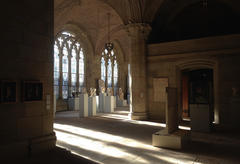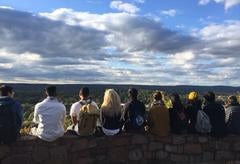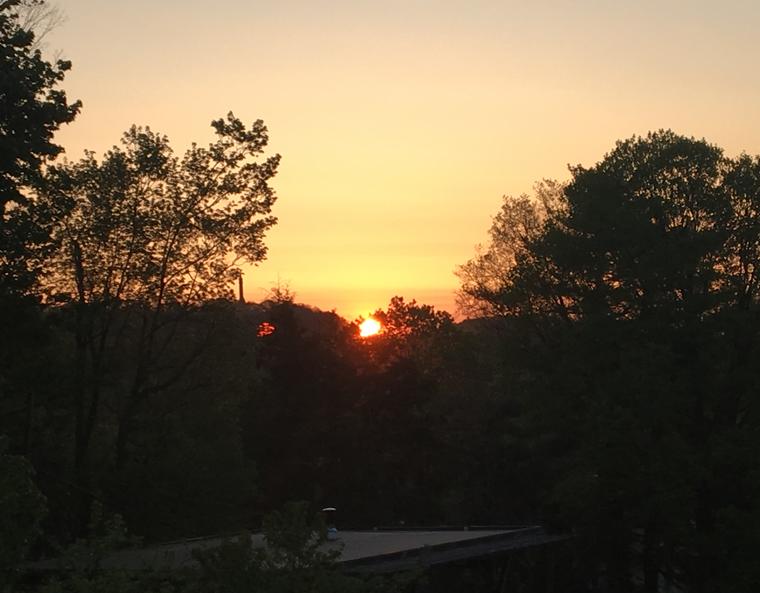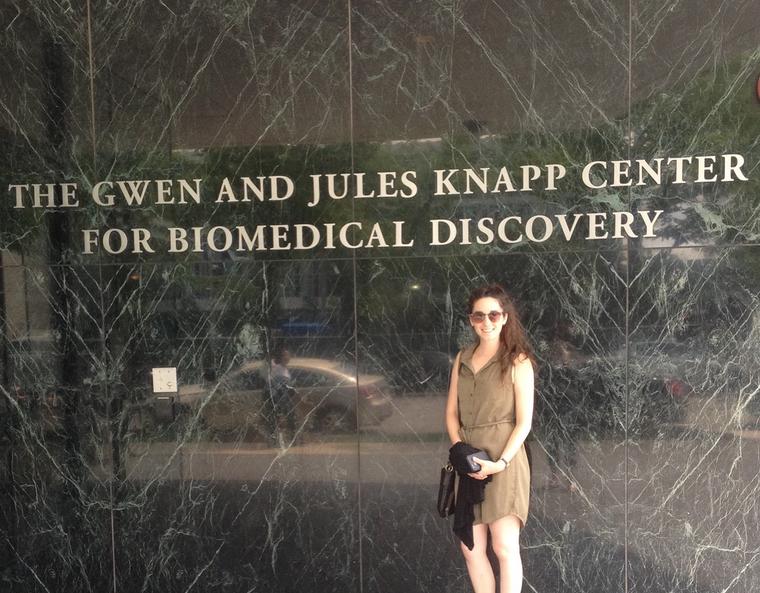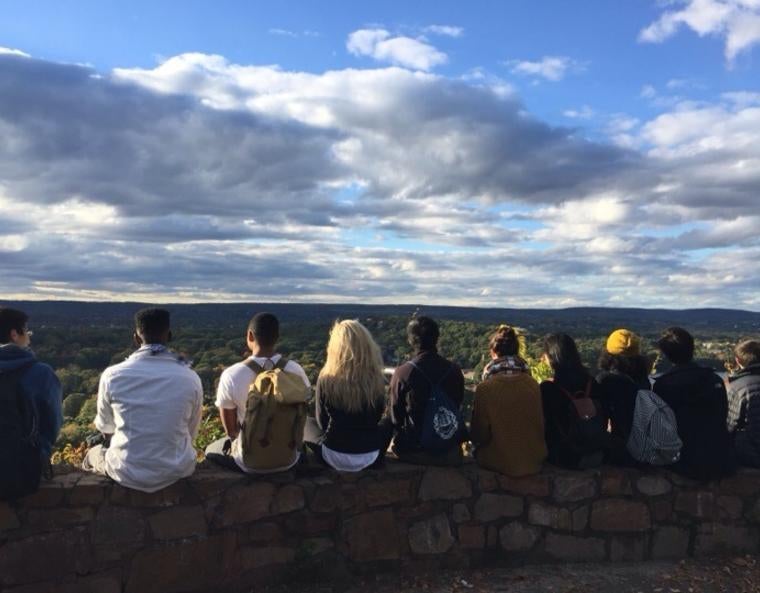
Ask ten different Yalies their favorite study spot and you will get ten different answers. Some people like the traditional feel of a squishy leather armchair in Sterling Memorial Library. (Sterling resembles a European Gothic cathedral and is the largest of Yale’s libraries.) Others prefer the focus and quietude to be found in a dark-wooded Bass Library study room, or the calming background noise (and possibility of seeing friends!) in the Bass cafe. Some swear by one of the coffee shops found around campus—Jojo’s and BlueState are prime examples—while others prefer to settle into the couches and chairs of their common rooms, turn on some music, and curl up with some readings or problem sets and a mug of hot chocolate.
One of my favorite places to study is at a nature center at the top of Science Hill. The location is fantastic in so many ways. First of all, it’s only a couple blocks from my chemistry class that meets Mondays, Wednesdays, and Fridays. Second, and more importantly, the view is spectacular. From a single vantage point, you can see the spread of Yale’s campus, the peaks of New Haven’s buildings, and the bluffs of East Rock State Park.
For Yalies, “study spots” aren’t simply places to get work done. They are places to truly learn, and to think about the worldly consequence of the material discussed in class. They are places to make connections and to examine the aspects of our lives that are enriched by the topics we are learning about.
While studying Gibb’s Free Energy in my chemistry class, we learned that Gibb’s had been a student at Yale and had actually conducted his groundbreaking thermodynamics research in a building just a 4-minute walk away from our classroom. While studying Stanley Milgram’s famous experiment on authority in my psychology class, we learned that that experiment had been performed in the basement of Linsly-Chittenden Hall, a building I go to every Tuesday and Thursday for my English class (and one that I can see from my bedroom window!). The influence of Yale’s campus on its academic culture can never be overstated. On a superficial level, the beauty of our surroundings is conducive to learning in every way. On a deeper level, however, there is also a sense of awe to be found in realizing that we are treading the same ground tread upon by amazingly influential people, people who have made significant contributions to nearly every branch of human knowledge. Indeed, Yale’s history contains the stories of many of the “greats”—presidents, Oscar-winning actors, Nobel Prize laureates.
These people are what contribute most to the significance of this campus, not just the gorgeous tree-lined avenues or the mighty gothic architecture. That’s why I make those trips a couple extra blocks up the hill so frequently. It’s not simply to study. It’s the same reason my friends might go to sit in the marble atrium of Sterling or to the carrels of Bass: it’s to be swept up in a wave of ideas, guided by a closeness to lives lived with great impact and passion, ultimately steered through a course that is all your own.;


